
The history of the Orsanmichele goes back to the 8th century. An oratory, called San Michele in Orto, was built. ‘Orto’ means garden or orchard. This was demolished in 1239 and a loggia, a building with one or more open sides, was in use as a grain market. The space retained a religious function, and an image of the Virgin on a pillar was claimed to work miracles.
Following fire damage, a new loggia was completed in 1349. The image of the Virgin had faded, and was replaced by the existing image by Bernardo Daddi. It was sited in a grand altar, known as the tabernacle, created by Andrea Orcagna around 1359.
It soon was decided that the increasingly sacred place was no longer suitable for use as a market, and the market moved elsewhere. Not all the grain disappeared: in 1380 two upper stories were added to serve as a grain store. The loggia was closed in, and stained glass windows were added. The building we see today was completed by 1404. The niches outside were dedicated to the various guilds of the city. The guilds commissioned some of the greatest sculptors of the time to carve statues of their patron saints.
The statues in place today and shown below are not the originals, which have been taken indoors and are on display upstairs in what was the grain store. They have been replaced by modern copies. I have used the copies as they give a better impression of how they looked in their original context. Possibly, some of the photographs may be old ones, showing the statues before they were moved. The statues are shown in order as they are placed around the building, starting at the east end.

St John the Baptist.
Lorenzo Ghiberti, 1416.
Commisioned by the Merchants Guild.
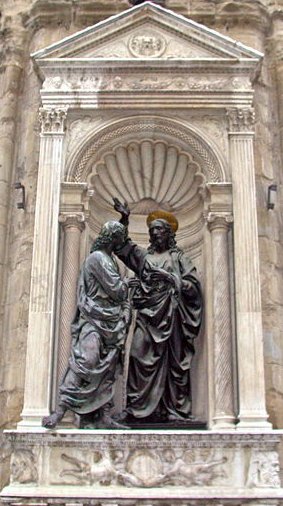
Doubting Thomas and Christ.
Andrea del Verrocchio, c1466.
Commissioned by the Merchant's Guild.
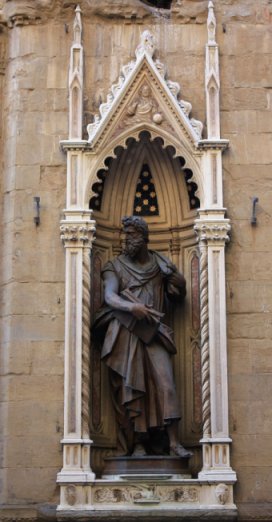
St Luke
Giambologna, 1601.
Guild of Magistrates and Notaries.
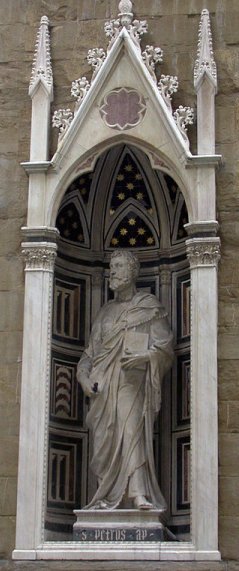
St Peter
Donatello, 1413.
Guild of Butchers
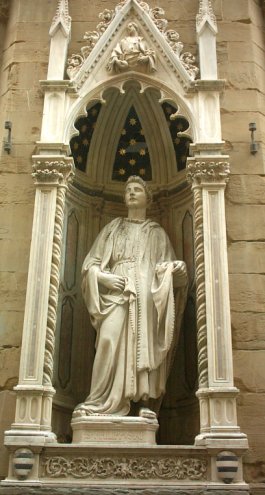
St Philip
Nano di Banco, c1412
Guild of Shoemakers
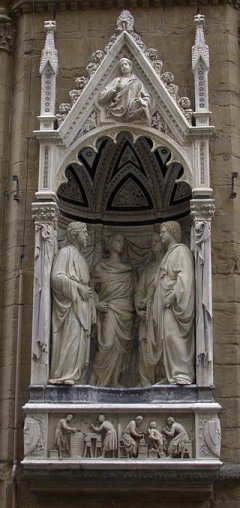
The Crowned Martyrs
Nano di Banco c1414
Guild of Stone and Wood Masters
On to page 2